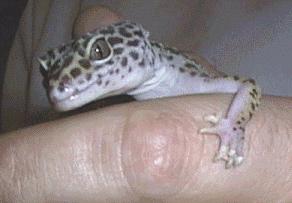Difference between revisions of "Lizard Dysecdysis"
Jump to navigation
Jump to search
(Created page with '{{unfinished}} [[Image:Lizard_dysecdysis.jpg|400px|thumb|right|'''Retained skin on the digits of a leopard gecko''' (Copyright © RVC and its licensors, Sean Bobbit, Sue Evans, …') |
|||
| Line 15: | Line 15: | ||
* Soak affected areas in warm water for 5-10 minutes then manually remove with a gently abrasive wet surface. | * Soak affected areas in warm water for 5-10 minutes then manually remove with a gently abrasive wet surface. | ||
* Raising environmental humidity by regular misting of the interior of the cage as well as the animal, providing large surface-area shallow trays of water for evaporation, and shallow warm water baths. A small enclosure within the vivarium can be added to create localized increased humidity by adding a water-absorbent bedding such as sphagnum moss or cotton wool. | * Raising environmental humidity by regular misting of the interior of the cage as well as the animal, providing large surface-area shallow trays of water for evaporation, and shallow warm water baths. A small enclosure within the vivarium can be added to create localized increased humidity by adding a water-absorbent bedding such as sphagnum moss or cotton wool. | ||
| + | [[Category:Lizard_Skin_Diseases]] | ||
Revision as of 15:04, 17 March 2010
| This article is still under construction. |
Normal sloughing is a sign of good health in a reptile. Dysecdysis is difficulty in sloughing, usually caused by low environmental humidity. Lizards with dysecdysis tend to retain their sloughs at the extremities (distal digits, tail tip, dorsal spines). Short term consequences include difficulty shedding due to dehydration of the slough; the long term involves dehydration of the lizard, especially if coupled with inappropriate water provision. Skinks and geckos may retain slough around their eyes, leading to conjunctivitis.
Aetiology
- Low humidity
- Ectoparasites
- Dermatitis
- Systemic disease
Treatment
- Soak affected areas in warm water for 5-10 minutes then manually remove with a gently abrasive wet surface.
- Raising environmental humidity by regular misting of the interior of the cage as well as the animal, providing large surface-area shallow trays of water for evaporation, and shallow warm water baths. A small enclosure within the vivarium can be added to create localized increased humidity by adding a water-absorbent bedding such as sphagnum moss or cotton wool.
